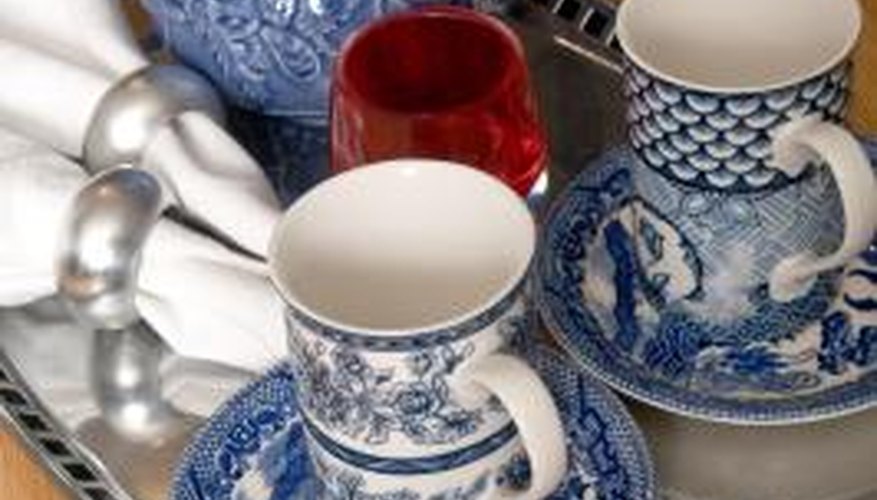Dinnerware requires two basic production steps -- the body and the glaze. Crazing is the cracking of the surface glaze common in old dinnerware and often reproduced to create the "antique" look for modern dishes. Natural crazing creates fissures or cracks in the top surface that can allow liquid to seep into the body. Much of the artificial crazing has a glaze layer over the "cracks." You can see the difference with a magnifying glass or you may be able to feel the difference in heavily crazed items.
Causes of Crazing
The cause of crazing is physical and chemical and relates to the coefficient of expansion, as explained by Susan Peterson in "The Craft and Art of Clay." With two different products used together, the body and the glaze, the expansion rate is not identical. Peterson also discusses "shivering," the opposite of crazing. Shivering causes glaze pieces to pop off or to squeeze the body until it cracks. If the body expands faster than the glaze, crazing results, according to the University of Kentucky Cooperative Extension Service.
- The cause of crazing is physical and chemical and relates to the coefficient of expansion, as explained by Susan Peterson in "The Craft and Art of Clay."
When Crazing Occurs
Crazing may occur immediately upon removal of the glazed item from the kiln or it may not occur until years later. If you leave your fine pottery and dinnerware in the garage or storage with temperature changes, you may find items crazed that existed 50 years without crazing. Washing older dinnerware in hot or cold water may also cause crazing, as the sudden change from one temperature to another makes the top glaze crackle or craze.
Effects of Crazing
Some collectors refuse to purchase any crazed pottery items, particularly dinnerware. Crazing devalues some of the collectable dinnerware. Pottery lovers tend to overlook crazing in art pottery, particularly if the viewer cannot see it a foot or so away. Crazing is not harmful in items for decorative use but can be problematic in cooking and serving pieces used for their original purpose.
- Some collectors refuse to purchase any crazed pottery items, particularly dinnerware.
- Pottery lovers tend to overlook crazing in art pottery, particularly if the viewer cannot see it a foot or so away.
Using Crazed Dinnerware
The glaze is a protective covering on the dinnerware. Dinnerware crazing fractures the coating and safety with use may come into question. Older dinnerware often had lead content in the body, the colour or the glaze. The Royal China Club has answered this question for Royal China, maker of much of the vintage and collectable American dinnerware. There is a greater health hazard with the potential for lead leaching out on crazed dinnerware, the club reports.
Another issue for the dinnerware user may be bacteria in the crazing cracks. Those who take no chances use vintage and collectable dinnerware for display only.
- The glaze is a protective covering on the dinnerware.
- Another issue for the dinnerware user may be bacteria in the crazing cracks.
